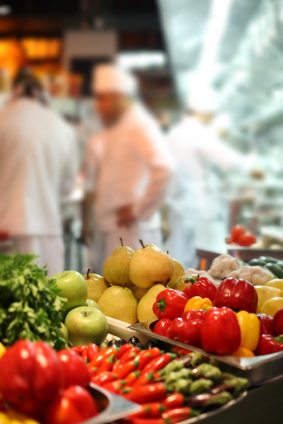How to Properly Organize Your Inventory
Properly organizing restaurant inventory is key to getting what you need when it is needed.When you are in the midst of peak business hours you do not want to have your staff running around trying to figure out where certain food and beverages are kept. The best way to avoid this scenario is for your inventory to be stocked in a neat and organized manner. This will allow your employees to locate what they need and have it available at their fingertips when it is needed. This will save on waiting time by kitchen staff and ultimately, the customer. In addition, being well organized will prevent you from wasting food, running out of stock and having items spoil because they were not used in a timely fashion.
Organizing your inventory is not as difficult as you think, if you create a workable system.

Stock Similar Items Together
It is always easier to locate an item if it is located near similar items. It makes more sense to store your perishable foods in one place rather than scatter them in different spots around your establishment. This way, when you look for something, you know exactly where to find it. Even if you do not know where the exact spot of what you are looking for is, you will be able to find it easily. This is also beneficial when you need to train new employees on the kitchen operations.
Date Items Immediately
Items that are perishable should always be dated before they are stored. This allows your employees to know if the item they need is still good for use or if it should be discarded. It also helps when you are making an order. By looking at the dates on your food items, you can easily see if you will need to order fresh items, as your supply will be used or go bad before the next order is placed.
In a restaurant, the best idea is to use the items that are oldest first. Move the items that were originally in storage to the front and place the new items in the back. This keeps fresh food fresh and prevents older foods from spoiling before use.
Double Check Every Order
Vendors make mistakes, which is why you should always double check orders when they arrive. Make sure not to accept foods that are spoiled or beginning to rot. If it should happen, then the vendor should take full responsibility and replace the items without hesitation. If you do accept a bad order, then you will end up with food that goes bad before you can use it. This will cost you money and leave you under-stocked when, according to your ordering calculations, you should not have been.
Assign Staff to be in Charge of Inventory
Assign someone to be in charge of inventory. By having one or two people in charge of inventory, they can count the inventory weekly and account for missing items and the need to reorder. Additionally, they can be made responsible for making sure supplies are available at all times. This will provide you with consistency in inventory control and will help reduce waste. There are many software programs that can help with inventory control and inventory counting that will be a small, but worthwhile investment for your restaurant.
As you set up your inventory, you want to make sure that it is accessible, easy to understand and works to benefit your business. Organizing your inventory right from the beginning will ensure that your staff knows where everything they need is located in an organized, thoughtful manner. Having people responsible for counting the inventory and keeping track of it, will help you save money on food costs and prevent theft and spoilage.